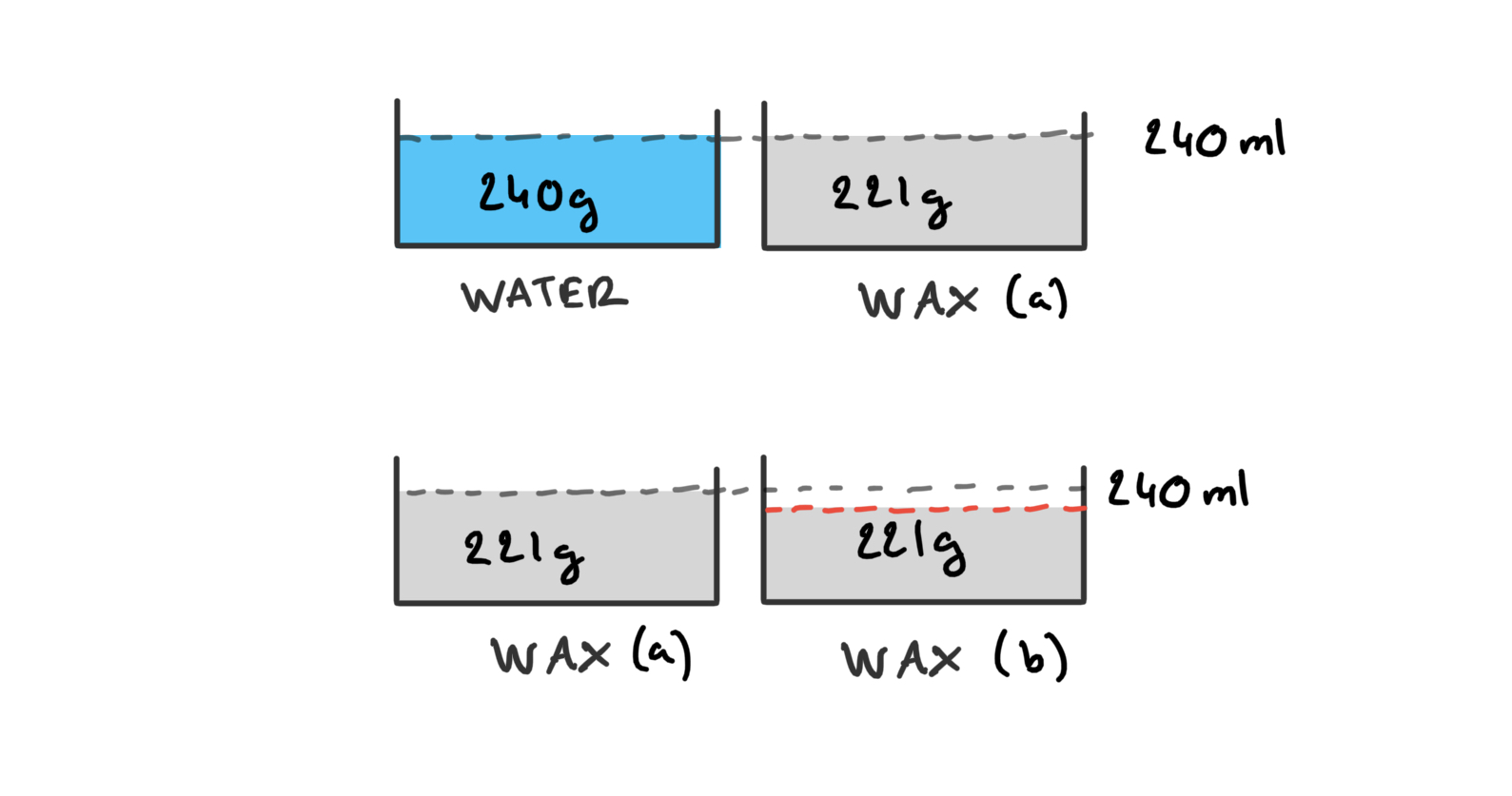In the world of candle making, precision is key. One crucial aspect that demands accuracy is the determination of the candle's fill weight. This measure is not just a requisite for consistency in production but also plays a pivotal role in quality control.
What is Fill Weight?
Fill weight refers to the total weight of the consumable materials — primarily wax and any added fragrances or dyes — used to fill a candle container. It's an essential measure for candle makers as it determines the amount of raw material needed for each candle, ensuring uniformity in production.
Why is Fill Weight Important?
Working with weight provides more accuracy as it is easier to measure by weight than volume. Accurate fill weight calculation is vital for several reasons:
- Consistency: It ensures every candle in a batch has the same amount of wax and fragrance, leading to a uniform burn time and scent throw.
- Cost-Effective: Accurate measurements prevent wastage of materials.
- Quality Assurance: Proper fill weight contributes to the optimal performance of the candle.
How To Calculate a Candle's Fill Weight?
The obvious way to calculate your candle's fill weight is by simply weighing it. It is the most accurate method once you are happy with your wax, additives, fragrance load and dye content, with the container filled to the desired level.
- Place your empty container on your scale. This is your
Container Weight - Pour the mixed wax, fragrance and dye in your container to the desired level. This is the
Total Weightof your candle - Substract the
Container Weightfrom theTotal Weight. This is your candle'sFill Weight
Here is the formula:
Fill Weight = Total Weight - Container Weight
If your scale has the Tare functionality, you won't even need to do any maths:
- Place your empty container on your scale
- Press Tare. This should reset the weight to 0.
- Pour the mixed wax, fragrance and dye in your container to the desired level.
- The weight will be your candle's
Fill Weight
How To Estimate a Candle's Fill Weight?
Let's imagine you are in the experimental phase of making a new candle, and you aren't quite sure how much fragrance you want to add. Maybe you want to play around with adding some additives to your wax. How do you estimate the fill weight of the container you want to use?
Using wax
Your chosen wax will likely be the main ingredient of your candle, even when blended with fragrance and/or dye. It will give you a fairly good estimate of the fill weight you will be working with, but keep in mind the same fill weight may reach different levels in the same container depending on your candle's composition, such as the fragrance load, its relative density, and any other additives. Follow the steps above with the wax you want to work with.
The weight of the wax will be your estimate fill weight.
Fill Weight ≈ Wax Weight
Using water
With a scale
If you don't want to melt wax or you don't have enough wax to estimate the fill weight, you can use water. If you know your wax's relative density, you have everything you need to calculate the fill weight of a container. It's ideal for containers that are awkwardly shaped. Follow the same steps described above, but instead of wax, use water.
Once you have the weight of the water (excluding the weight of the container), multiply it by the relative density of the wax you want to work with:
Fill Weight ≈ Water Weight * Wax Relative Density
With a measuring jug
We recommend to avoid using this method as measuring a volume is usually less accurate than measuring the weight of a substance.
- Fill up your container with water to the desired level
- Pour water into a measuring jug
- Use the measured
Volumeinmland multiply it by theWax Density. This will give you an estimatedFill Weightin Gramsg.
Fill Weight ≈ Volume * Wax Density
More On Relative Density
Relative density refers to the density of a substance in relation to another substance, usually compared to water. It is also commonly known as specific gravity. Relative density is a measure of how much a material weighs compared to an equal volume of water.
Different waxes, additives and fragrances have different relative densities. This means that for the same weight, different substances will give you different volumes, and vice versa:

In the image above, Wax (a) has a relative density of 0.92, Wax (b) has a relative density of 0.95. Less weight is required from Wax (a) to match the same volume of water. 221g would be your estimated fill weight. But let's say that during your experiment, you weren't happy with Wax (a)'s performance. So you swapped it with Wax (b) and worked with the same fill weight. You weigh 221g of Wax (b), melt it, and pour it into your vessel. You would notice that the newly poured wax doesn't quite match the level your previous wax reached. In order for this new wax to reach a similar level, you would need to increase the fill weight by 7g due to its higher relative density.
Note: The relative density values (0.92 and 0.95) in the example are for illustration purposes only and may not reflect the actual relative densities of waxes in practice.



